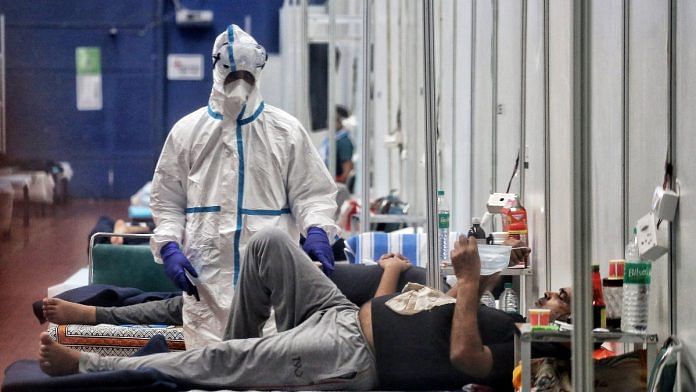New Delhi: In a bid to strengthen the primary healthcare system and address gaps in it as highlighted by the Covid pandemic, the Budget 2021 has allocated Rs 13,192 crore for health spend through panchayati raj institutions (PRIs) and urban local bodies (ULBs). The move is in accordance with the recommendations of the 15th Finance Commission.
The Ministry of Health and Family Welfare is in the process of drawing up the guidelines about where this money will be spent.
This is the first tranche of a total grant of Rs 70,051 crore earmarked for the health sector at the rural and urban local body levels over the award period of five years.
A committee headed by the health secretary, comprising principal secretaries of health of all states will draw a timeline of deliverables and outcomes for each of the five years along with a definite mechanism for flow and utilisation of these grants. This mechanism needs to be in place by April 2021 for the first installment of funds to start flowing by July 2021, according to the report.
In states, a committee under the chief secretary and comprising officials of the state departments of health, panchayati raj and urban affairs, and select representatives from all three tiers of rural and urban local bodies will decide on further devolution.
Usually, money meant for health schemes is given to states. This is the first time PRIs and ULBs will be directly involved in the spending of central funds.
Also read: Over 50% people in 10 Delhi districts show Covid antibodies, latest sero survey says
What the finance panel says
Chapter 9 of the 15th Finance Commission report deals with health and the learning for the sector from the pandemic.
“We have recommended grants for critical care hospitals, public health laboratories, Diplomate of National Board courses and training of allied healthcare workforce. This is in addition to the grants for health given through local governments and State-specific grants,” the report said.
“The total grants-in-aid support to the health sector over the award period works out to Rs. 1,06,606 crore which is 10.3 per cent of the total grants in-aid recommended by us. This forms about 0.1 per cent of gross domestic product. The grants for the health sector will be unconditional,” it added.
The panel has recommended that primary healthcare should be the number one commitment of every state. Moreover, primary health expenditure should be increased to two-thirds of the total health expenditure by 2022.
The total public expenditure on health by states and the Centre should touch 2.5 per cent of GDP by 2025.
Also read: 12 children given sanitiser instead of polio drops in Maharashtra
Kerala model in transfer of funds to local bodies
The Finance Commission has recommended that health funds be routed through PRIs at the district, village and block levels, using a Kerala government model from 1996 to transfer 35-40 per cent of the state’s development budget to local governments.
Under this model, sub-centres and primary health centres (PHCs) in rural areas were brought under the overall supervision and control of gram panchayats, putting in place mechanisms for greater community involvement.
Community health centres (CHCs) and taluk hospitals were under the purview of block panchayats. District hospitals and the management of state-sponsored and centrally sponsored schemes (CSS) at the district level came under district panchayats.
Similarly, CHCs and taluk hospitals in urban areas were transferred to municipalities and municipal corporations.
“Taking a cue from the Kerala model, we considered this to be an opportune time to involve the third tier in the health sector and extend additional resources to it to strengthen the primary health system at the grass root level. We believe that the involvement of local governments would also make the health system accountable to the people,” the panel said.
“We also sought an assessment of existing gaps in the health care delivery system in both rural and urban areas from the Union Government. We also analysed the existing interventions through different programmes, including the CSS of National Health Mission and Ayushman Bharat. Based on our assessment, we have decided to provide a part of the grants earmarked for the third tier for support to primary healthcare,” it added.
Also read: Budget gives 200% boost to pharma sector as govt looks to curb dependence on China



